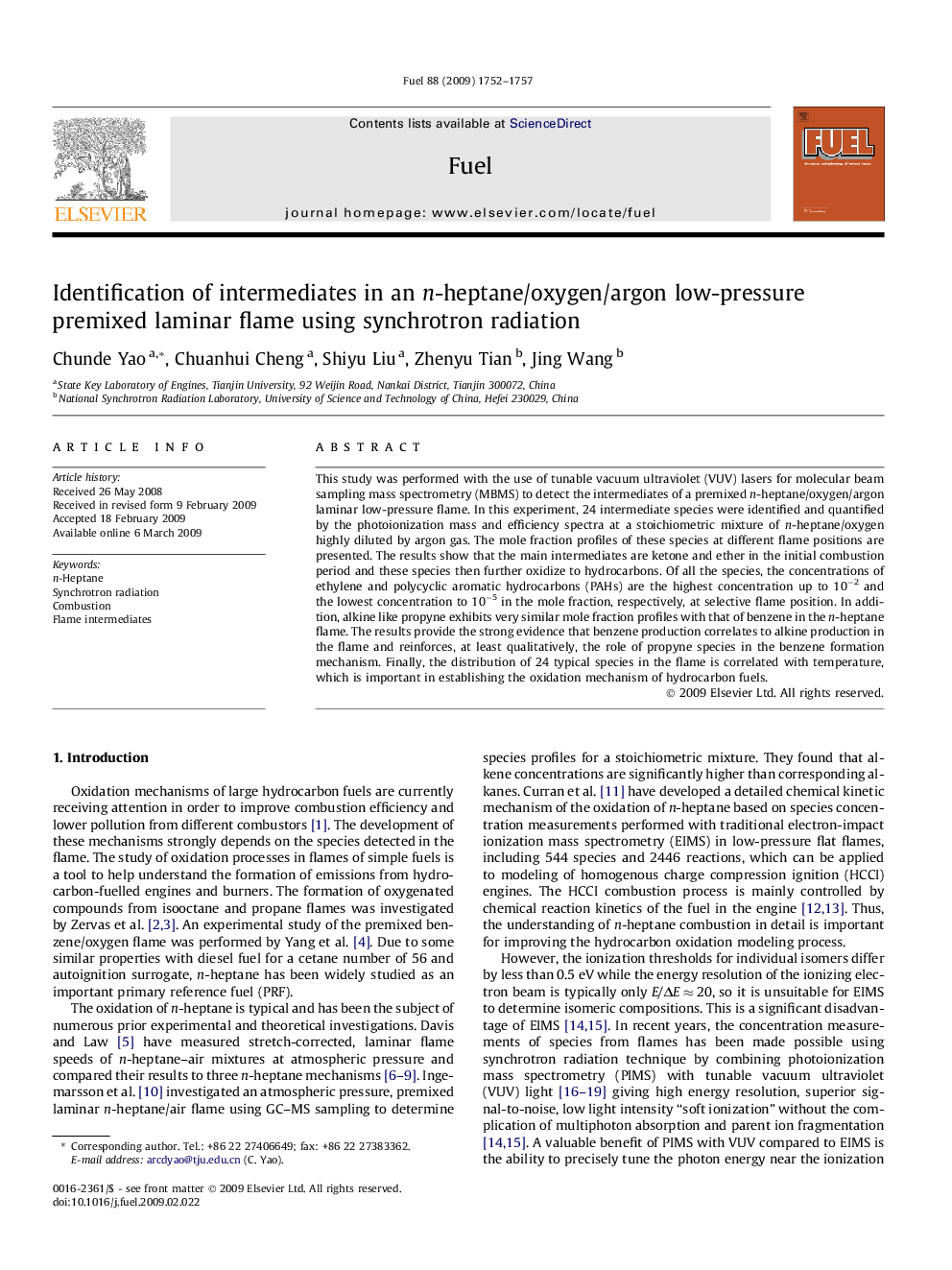| Article ID | Journal | Published Year | Pages | File Type |
|---|---|---|---|---|
| 207134 | Fuel | 2009 | 6 Pages |
This study was performed with the use of tunable vacuum ultraviolet (VUV) lasers for molecular beam sampling mass spectrometry (MBMS) to detect the intermediates of a premixed n-heptane/oxygen/argon laminar low-pressure flame. In this experiment, 24 intermediate species were identified and quantified by the photoionization mass and efficiency spectra at a stoichiometric mixture of n-heptane/oxygen highly diluted by argon gas. The mole fraction profiles of these species at different flame positions are presented. The results show that the main intermediates are ketone and ether in the initial combustion period and these species then further oxidize to hydrocarbons. Of all the species, the concentrations of ethylene and polycyclic aromatic hydrocarbons (PAHs) are the highest concentration up to 10−2 and the lowest concentration to 10−5 in the mole fraction, respectively, at selective flame position. In addition, alkine like propyne exhibits very similar mole fraction profiles with that of benzene in the n-heptane flame. The results provide the strong evidence that benzene production correlates to alkine production in the flame and reinforces, at least qualitatively, the role of propyne species in the benzene formation mechanism. Finally, the distribution of 24 typical species in the flame is correlated with temperature, which is important in establishing the oxidation mechanism of hydrocarbon fuels.
